![Braxton, Anthony & Taylor Ho Bynum: Duo (Amherst) 2010 [DVD] (New Braxton House) Braxton, Anthony & Taylor Ho Bynum: Duo (Amherst) 2010 [DVD] (New Braxton House)](https://www.teuthida.com/productImages/misc4/17943.jpg)
Newly Distributed in 2021: Limited edition DVD plus audio files of two extended sets bringing saxophonist Anthony Braxton and cornetist Taylor Ho Bynum together live at Bezanson Recital Hall in Amherst, MA in 2010, performing compositions by both artists.
In Stock
Quantity in Basket: None
Log In to use our Wish List
Shipping Weight: 3.00 units
EU & UK Customers:
Discogs.com can handle your VAT payments
So please order through Discogs
Sample The Album:
Anthony Braxton-alto saxophone, sopranino saxophone, soprano saxophone, baritone saxophone
Taylor Ho Bynum-cornet, flugelhorn, pocket cornet, trumpbone, piccolo, bass trumpet
Click an artist name above to see in-stock items for that artist.
500 copy limited edition. DVD comes with digital download of audio only files of the performance.
UPC: 616892134947
Label: New Braxton House
Catalog ID: NBH902
Squidco Product Code: 17943
Format: DVD
Condition: New
Released: 2013
Country: USA
Packaging: DVD Digipack
Recorded live on September 22nd, 2010 at Bezanson Recital Hall, Amherst, MA.
"Live DVD recording of two extraordinary composer/improvisers, illuminating the conversational musical exchange between the artists and documenting their instrumental choices and extended techniques. "-Firehouse 12 Records
"It is amazing that this is the first live performance that Anthony Braxton and Taylor Ho Bynum ever did together as a duo. The two musicians have a long history: Ho Bynum studied with Braxton at Wesleyan University, as is well known, and the two have worked together in numerous contexts ever since, including ensembles of 3 to 13 musicians, large orchestras, opera, and numerous other projects. In 2002, they recorded a set of duos together in the studio, but they never appeared live until this date. This is a very special encounter. The earlier duo record is a meeting between master and protege. But by the time this recording was made, Ho Bynum had a decade of performance and composition under his belt, making this a duo of two of the great virtuosos of our time, displaying their immense talents before an eager audience at University of Massachusetts-Amherst.
Both sets, and especially the first set, begin with a tenderness that one might expect between two old friends. The set up of the stage itself tells us something of their goal: rather than standing side-by-side facing the audience, they appear on either side of the stage, facing each other. This is a conversation, not a contest-the two are reunited after some time apart and each has come with something to say in reunion.
Both musicians contribute compositions to the performance. Each set begins with two pieces by Braxton, then works by Ho Bynum follow. The flow between pieces is seamless as the two cycle through their many instruments which they have lined up on the stage nearer to the audience. Braxton and Ho Bynum, masters of woodwinds and brass, respectively, have a seemingly bottomless bag of tricks from which to draw, though there is no hint of hesitation as they jump from one instrument to another in succession. Each set lasts approximately 45 minutes.
The first set opens with a slow escalation into beautiful scales from both musicians as their sound flows through and around each other like a friendly embrace. The two also greet each other with their bodily movements: Braxton forward and back, and Ho Bynum in his signature wheel-like rotations that propel him side to side and up and down simultaneously. It is fortunate that the performance has been released on DVD, for the physical movements of the players highlight the sound and the connectivity. There are brilliant moments of discord that broaden the emotional palate of the songs, which, in turn, draw out the tranquil sections all the more. The opening section escalates into a fiery exchange between Ho Bynum's bass trumpet and Braxton's soprano that eventually shifts to flugelhorn and alto. They meld into thoughtful whispers, then Ho Bynum surges into disciplined staccato over the mellower Braxton.
With Ho Bynum moving to cornet, they shift into a propulsive, yet tender undercurrent, while gradually growing bolder and bolder. Rising further and further, they break into microtones, one of the most subtly brilliant moments of the set. The control of such tones is exceedingly difficult, but they do so without wavering. Then the song shifts noticeably into a lyrical, ballad-like solo of Braxton still on alto, with Ho Bynum following with muted cornet, relaxing the mood. While the first set has many moments of sophisticated interaction, one of the most interesting features Ho Bynum on trumpbone, full of energy, and Braxton on baritone sax, where just the movement of keys elicits a percussive feel over the more fluid brass. They eventually shift to sopranino producing voice-like utterances over Ho Bynum's aqueous trumpet.
The second set begins with a similar feeling to the first, but develops faster into conversation as the two share stories and experiences with one another. The first fifteen minutes of this set features a general shift from upper register to lower (with the exception being Braxton begins on alto, shifts to soprano, and then descends alongside Ho Bynum). This movement evokes a great deal of initial energy, then slowly mellows into deeper, broader tones, though not without bursts of excitement, such as moments of Braxton on baritone with the triumphant Ho Bynum surging on cornet.
Again the two players set off toward a new horizon, escalating gradually until they reach a momentary climax in microtones. Then, after a brief repose, they surge again, this time with Ho Bynum laying a base with muted cornet-producing an earthy groan-with Braxton making sharp attacks on sopranino over the top. Then, muteless, the two exchange a series of piercing exclamations-hitting the exact same tone in succession-such that it is difficult even to determine which of them is playing at a particular moment. This amazing display of unity crowns the performance before receding into a tender exchange on alto and trumpbone into microtones and other small, subtle sounds to the end.
The music produced on this record sets the bar high for future duo performances. The two musicians seem not at all concerned with somehow besting each other, but rather build an amazing vocabulary of interaction together. They each build off the mood of the other, offering friendly, affectionate interchanges between the once master and student, now colleagues and friends. The two build music together with such a great deal of familiarity that they manage to relax, almost immediately, and set to the task of delving into their own sound and that of the other, to discover and define new methods of expression and interaction.
One of the most impressive things about this record is the ability the musicians have for maintaining particular moods or emotions while moving from one instrument to the next. Their expansive repertoire allows them so much versatility that stretches beyond one instrument, style, or composition. They also exert amazing control of their sound as they move between composed ideas and improvising within those contexts.
These are two musicians with a great deal to say. The hour and a half of music contained on this album gives the listener an enormous amount to digest. But despite its myriad complexities, the music leaves us with the feeling that the conversation between Braxton and Ho Bynum has only begun and that they have a great deal more to say to one another. We can only hope that more moments like this one are captured for the rest of us to enjoy."-Cisco Bradley , Jazz Right Now
500 copy limited edition. DVD comes with digital download of audio only files of the performance.
Get additional information at Jazz Right Now
Artist Biographies
• Show Bio for Anthony Braxton [Anthony Braxton (born June 4, 1945) is an American composer and instrumentalist.] "Genius is a rare commodity in any art form, but at the end of the 20th century it seemed all but non-existent in jazz, a music that had ceased looking ahead and begun swallowing its tail. If it seemed like the music had run out of ideas, it might be because Anthony Braxton covered just about every conceivable area of creativity during the course of his extraordinary career. The multi-reedist/composer might very well be jazz's last bona fide genius. Braxton began with jazz's essential rhythmic and textural elements, combining them with all manner of experimental compositional techniques, from graphic and non-specific notation to serialism and multimedia. Even at the peak of his renown in the mid- to late '70s, Braxton was a controversial figure amongst musicians and critics. His self-invented (yet heavily theoretical) approach to playing and composing jazz seemed to have as much in common with late 20th century classical music as it did jazz, and therefore alienated those who considered jazz at a full remove from European idioms. Although Braxton exhibited a genuine -- if highly idiosyncratic -- ability to play older forms (influenced especially by saxophonists Warne Marsh, John Coltrane, Paul Desmond, and Eric Dolphy), he was never really accepted by the jazz establishment, due to his manifest infatuation with the practices of such non-jazz artists as John Cage and Karlheinz Stockhausen. Many of the mainstream's most popular musicians (Wynton Marsalis among them) insisted that Braxton's music was not jazz at all. Whatever one calls it, however, there is no questioning the originality of his vision; Anthony Braxton created music of enormous sophistication and passion that was unlike anything else that had come before it. Braxton was able to fuse jazz's visceral components with contemporary classical music's formal and harmonic methods in an utterly unselfconscious -- and therefore convincing -- way. The best of his work is on a level with any art music of the late 20th century, jazz or classical. Braxton began playing music as a teenager in Chicago, developing an early interest in both jazz and classical musics. He attended the Chicago School of Music from 1959-1963, then Roosevelt University, where he studied philosophy and composition. During this time, he became acquainted with many of his future collaborators, including saxophonists Joseph Jarman and Roscoe Mitchell. Braxton entered the service and played saxophone in an Army band; for a time he was stationed in Korea. Upon his discharge in 1966, he returned to Chicago where he joined the nascent Association for the Advancement of Creative Musicians (AACM). The next year, he formed an influential free jazz trio, the Creative Construction Company, with violinist Leroy Jenkins and trumpeter Leo Smith. In 1968, he recorded For Alto, the first-ever recording for solo saxophone. Braxton lived in Paris for a short while beginning in 1969, where he played with a rhythm section comprised of bassist Dave Holland, pianist Chick Corea, and drummer Barry Altschul. Called Circle, the group stayed together for about a year before disbanding (Holland and Altschul would continue to play in Braxton-led groups for the next several years). Braxton moved to New York in 1970. The '70s saw his star rise (in a manner of speaking); he recorded a number of ambitious albums for the major label Arista and performing in various contexts. Braxton maintained a quartet with Altschul, Holland, and a brass player (either trumpeter Kenny Wheeler or trombonist George Lewis) for most of the '70s. During the decade, he also performed with the Italian free improvisation group Musica Elettronica Viva, and guitarist Derek Bailey, as well as his colleagues in AACM. The '80s saw Braxton lose his major-label deal, yet he continued to record and issue albums on independent labels at a dizzying pace. He recorded a memorable series of duets with bop pioneer Max Roach, and made records of standards with pianists Tete Montoliu and Hank Jones. Braxton's steadiest vehicle in the '80s and '90s -- and what is often considered his best group -- was his quartet with pianist Marilyn Crispell, bassist Mark Dresser, and drummer Gerry Hemingway. In 1985, he began teaching at Mills College in California; he subsequently joined the music faculty at Wesleyan University in Connecticut, where he taught through the '90s. During that decade, he received a large grant from the MacArthur Foundation that allowed him to finance some large-scale projects he'd long envisioned, including an opera. At the beginning of the 21st century, Braxton was still a vital presence on the creative music scene." ^ Hide Bio for Anthony Braxton • Show Bio for Taylor Ho Bynum "Taylor Ho Bynum (b. 1975) has spent his career navigating the intersections between structure and improvisation - through musical composition, performance and interdisciplinary collaboration, and through production, organizing, teaching, writing and advocacy. As heard on over twenty recordings as a bandleader, Bynum's expressionistic playing on cornet and his expansive vision as composer have garnered him critical attention as one of the singular musical voices of his generation. He currently leads his Sextet and 7-tette, and works with many collective ensembles including a duo with drummer Tomas Fujiwara, the improv trio Book of Three, the UK/US collaborative Convergence Quartet, the dance/music interdisciplinary ensemble Masters of Ceremony, and the trans-idiomatic little big band Positive Catastrophe. His varied endeavors include his Acoustic Bicycle Tours (where he travels to concerts solely by bike across thousands of miles) and his stewardship of Anthony Braxton's Tri-Centric Foundation (which he serves as executive director, producing most of Braxton's recent major projects). In addition to his own bands, his ongoing collaboration with Braxton, past work with other legendary figures such as Bill Dixon and Cecil Taylor, and current collective projects with forward thinking peers, Bynum increasingly travels the globe to conduct community-based large ensembles in explorations of new creative orchestra music. He is also a published author and contributor to The New Yorker's Culture Blog, has taught at universities, festivals, and workshops worldwide, and has served as a panelist and consultant for leading funders and organizations. His work has received support from Creative Capital, the Connecticut Office of the Arts, Chamber Music America, New Music USA, USArtists International, and the Doris Duke Charitable Foundation." ^ Hide Bio for Taylor Ho Bynum
10/30/2024
Have a better biography or biography source? Please Contact Us so that we can update this biography.
10/30/2024
Have a better biography or biography source? Please Contact Us so that we can update this biography.
Track Listing:
1. First Set: 364f, 367h, Grade, Shift (45 minutes)
2. Second Set: 363a, 366j, Shift, Grade (43 minutes)
DVD
Improvised Music
Jazz
Free Improvisation
NY Downtown & Metropolitan Jazz/Improv
Anthony Braxton
Staff Picks & Recommended Items
Duo Recordings
Jazz & Improvisation Based on Compositions
Search for other titles on the label:
New Braxton House.


![Braxton, Anthony & Taylor Ho Bynum: Duo (Amherst) 2010 [DVD] (New Braxton House) Braxton, Anthony & Taylor Ho Bynum: Duo (Amherst) 2010 [DVD] (New Braxton House)](https://www.teuthida.com/productImages/full/17943.Full.jpg)






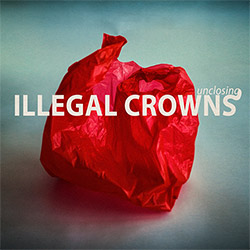


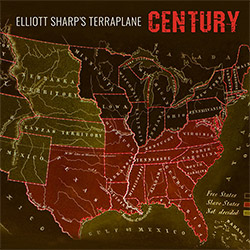




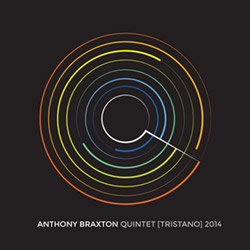
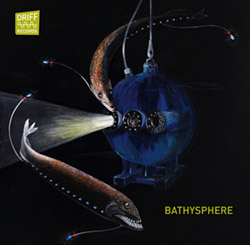


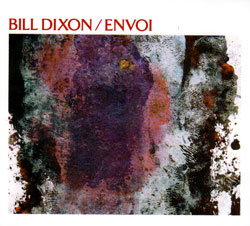
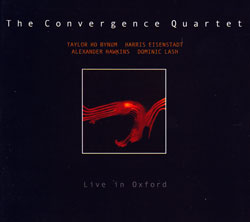
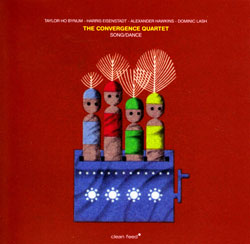

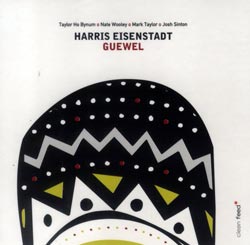
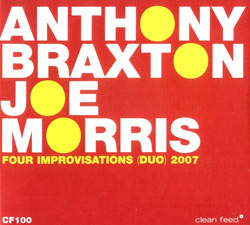
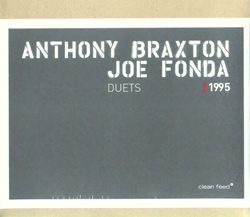








![Musicworks Magazine: #149 Fall 2024 [MAGAZINE + CD]](https://www.teuthida.com/productImages/misc4/35470.jpg)

![Nevai, Nandor: <<The PRICE of FRONTIER>> Book 1: FULK [BOOK + 4 CDs]](https://www.teuthida.com/productImages/misc4/35464.jpg)
![Nevai, Nandor: <<The PRICE of FRONTIER>> Book 2: MARTIAL [BOOK + 4 CDs]](https://www.teuthida.com/productImages/misc4/35465.jpg)
![Nevai, Nandor: <<The PRICE of FRONTIER>> Book 3: JASSOM [BOOK + 4 CDs]](https://www.teuthida.com/productImages/misc4/35466.jpg)
![Nevai, Nandor: <<The PRICE of FRONTIER>> Book 4: HARD-WON [BOOK + 4 CDs]](https://www.teuthida.com/productImages/misc4/35467.jpg)



![Elephant9 with Terje Rypdal: Catching Fire [VINYL 2 LPs]](https://www.teuthida.com/productImages/misc4/35355.jpg)
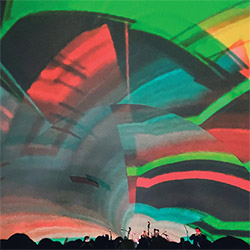
![Mazurek, Rob & Exploding Star Orchestra: Live at Adler Planetarium [VINYL]](https://www.teuthida.com/productImages/misc4/35233.jpg)
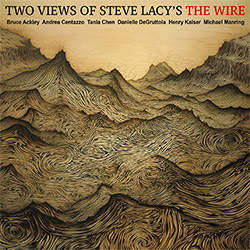
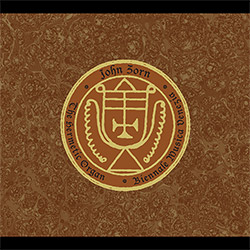
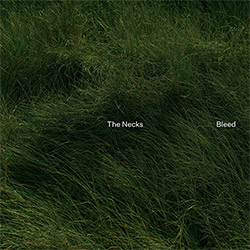
![Necks, The: Bleed [VINYL BLACK]](https://www.teuthida.com/productImages/misc4/35250.jpg)
![Necks, The: Bleed [VINYL GREEN + DOWNLOAD]](https://www.teuthida.com/productImages/misc4/35251.jpg)
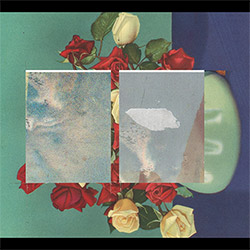



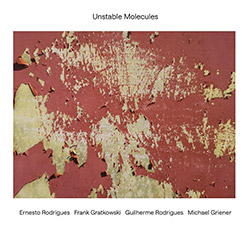
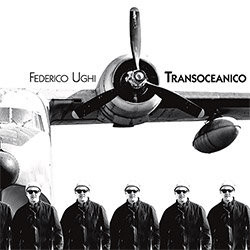
![Attias, Michael (Attias / Leibson / Pavolka / Ferber / Hoffman): Quartet Music Vol. I: LuMiSong [VINYL]](https://www.teuthida.com/productImages/misc4/34878.jpg)
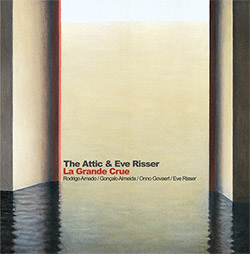
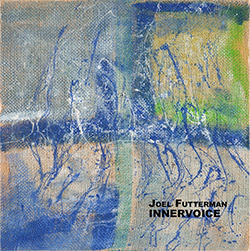

![Cunningham, Alex / Eli Wallace : The Terrible Habit Of Theatre [VINYL]](https://www.teuthida.com/productImages/misc4/35351.jpg)
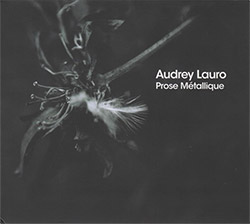
![Hoffman, Christopher (feat. Henry Threadgill / Anna Webber): Vision Is The Identity [VINYL]](https://www.teuthida.com/productImages/misc4/34877.jpg)

![Gregg, J.J. / Pavan Kanekal: Ease & Flow [CD + DOWNLOAD]](https://www.teuthida.com/productImages/misc4/35335.jpg)
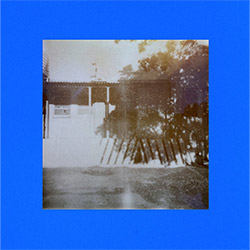
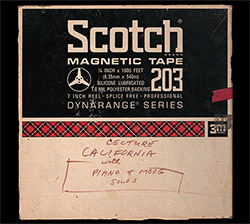
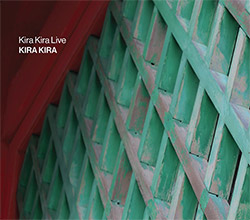
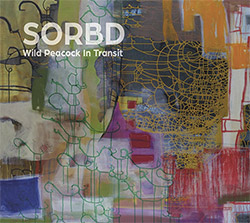
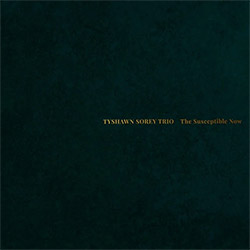



![DNS: Taking Big Bites Of The Khandas Three Cafes Deep [2 CDs]](https://www.teuthida.com/productImages/misc4/35334.jpg)




![Cleaver, Gerald: The Process [VINYL]](https://www.teuthida.com/productImages/misc4/34966.jpg)




![Alva Noto: HYbr:ID II [VINYL 2 LPs]](https://www.teuthida.com/productImages/misc4/35201.jpg)

![Baron, Derek / Luke Martin: Distinct and Concealed [CASSETTE + DOWNLOAD]](https://www.teuthida.com/productImages/misc4/35079.jpg)

![Lyle, Erica Dawn : Colonial Motels [CASSETTE + DOWNLOAD]](https://www.teuthida.com/productImages/misc4/35080.jpg)







![Alva Noto: HYbr:ID III [VINYL 2 LPs]](https://www.teuthida.com/productImages/misc4/35011.jpg)
![Kubisch, Christina / Trondheim Voices: Stromsanger 2022 For Six Voices And Electromagnetic Waves [VINYL]](https://www.teuthida.com/productImages/misc4/34628.jpg)
![Ristic, Manja / Joana Guerra / Veronica Cerrotta: Slani pejzazi [CASSETTE + DOWNLOAD]](https://www.teuthida.com/productImages/misc4/34928.jpg)
![Euro Herc: Segnali [CASSETTE + DOWNLOAD]](https://www.teuthida.com/productImages/misc4/34929.jpg)







![Zurria, Manuel: Fame di Vento [3 CDs]](https://www.teuthida.com/productImages/misc4/35167.jpg)

![Granberg, Magnus / Nattens Inbrott / Skogen: Holde Traume, Kehret Wieder! [2 CDs]](https://www.teuthida.com/productImages/misc4/35038.jpg)
![Frey, Jurg: Outermost Melodie [2 CDs]](https://www.teuthida.com/productImages/misc4/35039.jpg)

![Pavone, Jessica: Reverse Bloom [VINYL]](https://www.teuthida.com/productImages/misc4/34895.jpg)




![Modney (Modney / Wooley / Gentile / Roberts / Pluta / Symthe / ...): Ascending Primes [2 CDs]](https://www.teuthida.com/productImages/misc4/34852.jpg)






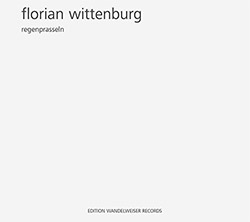

![Kirschner, Kenneth / Joseph Branciforte: From the Machine: Volume 1 [VINYL]](https://www.teuthida.com/productImages/misc4/30767.jpg)
![Golub, Phillip: Filters [VINYL + DOWNLOAD]](https://www.teuthida.com/productImages/misc4/32379.jpg)


![Deerlady (Obomsawin, Mali / Magdalena Abrego): Greatest Hits [VINYL]](https://www.teuthida.com/productImages/misc4/34876.jpg)




![Haino, Keiji: Black Blues [2 CDs]](https://www.teuthida.com/productImages/misc4/35109.jpg)



![Surplus 1980: Illusion of Consistency [CD]](https://www.teuthida.com/productImages/misc4/35069.jpg)
![Staiano, Moe: Away Towards the Light [VINYL + DOWNLOAD]](https://www.teuthida.com/productImages/misc4/35037.jpg)
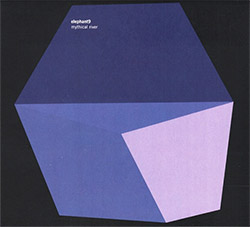



![Caveira (Gomes / Sousa / Abras / Ferrandini): Ficar Vivo [VINYL]](https://www.teuthida.com/productImages/misc4/34643.jpg)
![Gregg, J. J. / David Van Auken: Lunar Prairie [CD w/ DOWNLOAD]](https://www.teuthida.com/productImages/misc4/34611.jpg)

![Coultrain: Mundus [VINYL]](https://www.teuthida.com/productImages/misc4/32439.jpg)
![Mattin: Songbook #6 [VINYL]](https://www.teuthida.com/productImages/misc4/27317.jpg)
![Punkappella: Wake Up [7-inch VINYL]](https://www.teuthida.com/productImages/misc4/17519.jpg)
![Residents, The: WARNING: UNiNC.: Live And Experimental Recordings 1971-1972 [VINYL 2 LPs]](https://www.teuthida.com/productImages/misc4/31521.jpg)
![Coultrain: Phantasmagoria [VINYL]](https://www.teuthida.com/productImages/misc4/30142.jpg)
![Lennon, Sean Ono: Asterisms [VINYL]](https://www.teuthida.com/productImages/misc4/34517.jpg)

![Rotem Geffen: The Night Is The Night [VINYL]](https://www.teuthida.com/productImages/misc4/34631.jpg)

![Coley, Byron: Dating Tips for Touring Bands [VINYL]](https://www.teuthida.com/productImages/misc4/17906.jpg)

![Lost Kisses: My Life is Sad & Funny [DVD]](https://www.teuthida.com/productImages/misc4/lostKissesDVD.jpg)